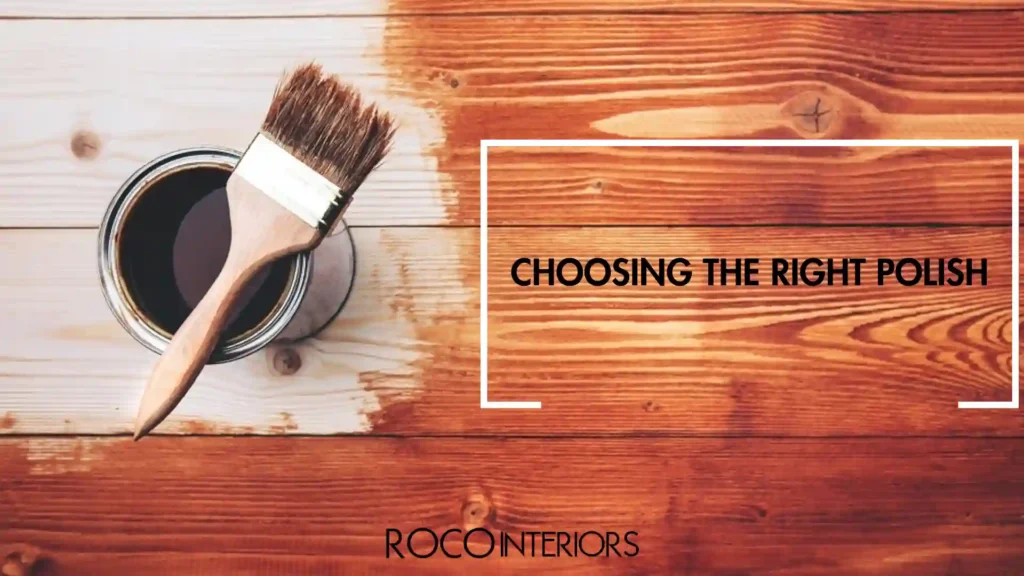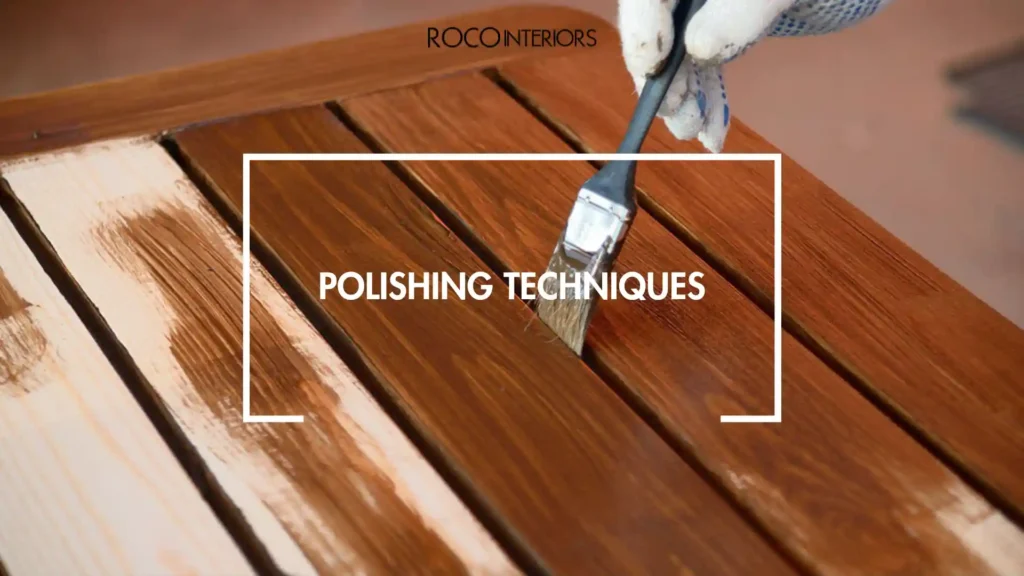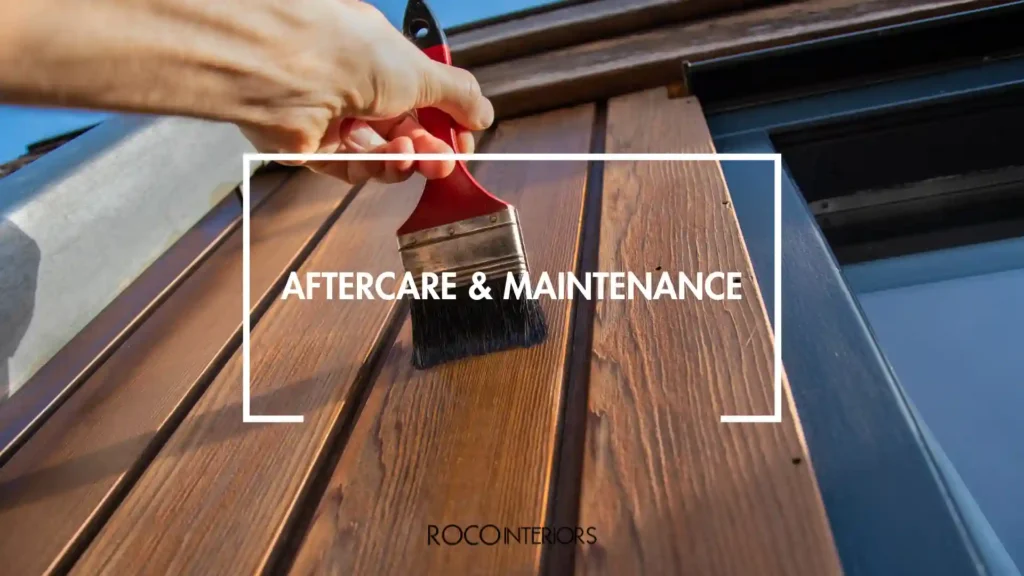How to Polish Furniture At Home?
Bringing luster back to dull neglected furniture breathes new life into worn pieces with just simple polishing techniques. Whether antiques handed down generations needing preserved charm or mid-century finds begging refreshed modern gleam, a little elbow grease serves any style.
Understand first your furnishings’ material composition before selecting suiting best polish for wood furniture. Tailor approaches addressing wood versus metal versus synthetic material needs. Prep surfaces fully before applying chosen restoratives.
Then follow application directions ensuring even coverage, minding risks and disposal steps afterwards. Soon cherished furniture glows gorgeously again heaping happiness in your refurbished surroundings.
Understanding Your Furniture & How To Polish Furniture
Knowing the best original furniture finishes helps match appropriate polishes reactive to those compositions. Wood types (oak, teak) benefit wood nourishers in oil or wax sealing in moisture while smoothing over cracks, scratches and cloudy spots.
Veneers or laminates require only light buffing protecting decorative overlay papers or plastic films atop cheaper wood cores. Metal bases and accents (iron, aluminum, chrome) regain brilliant shine with mineral oil’s light lubricating barrier properties reflected in gentle buffing.
Painted pieces need their color’s sheen revived through thin protective surface wax coats or furniture lacquers.Upholstered seating relies on fabric cleaners and conditioners tailored to linen, velvet or leather. Review manufacturer’s original care instructions if possible to identify initial finishes. Then match suitable polishing compatibles.
Choosing the Right Polish

Selecting unsuitable furniture wood polishes risks permanent tacky finishes, or clouding versus clearing aged surfaces in the process of learning how to polish furniture.
Consider sheens and bases. Oil-based polishes build durable penetration nourishing many wood types bringing back rich amber patinas through slow absorption then buffing. Walnut oil or pure tung oils prove reliable.
Wax-based polishes offer protective buffers atop lacquered wood pieces or painted sets requiring only light glazing to refresh. Carnauba creams add subtle sheen without yellowing. Solvent-based polishes combine gentle cleaning agents that cut stubborn grime before blending into smooth even finishing top coats.
Look for low odor water-based options. Homemade concoctions like olive oil with lemon lift residue from wood, metal and upholstery using household staples free from chemicals when wanting green furniture care. Test unseen underside areas first checking reactions ensuring polishes spread smoothly without tacky dried edges or clouding.
Preparing to Polish
Before liberally applying polishes, prep furniture surfaces clearing dust and debris that could mar smooth even application or finishing. Vacuum upholstery beneath chair and sofa cushion gaps where clinging crumbs and pet fur hide. Use small nozzle crevice tools reaching tighter areas.
Dust tabletops, cabinet tops and shelving using microfiber cloths gently lifting soot, eliminating lingering dirt and oils. Clean soiled areas beforehand using mild soap and water avoiding saturation or long drying delays.
Set filled applicator bottles, buffing soft cloths and spare rags within easy reach once furniture gets positioned for the “How to Polish Furniture” process. Layer drop cloths over flooring underneath for incidental drips while working. Open windows allowing ample fresh airflow preventing inhaling fumes.
Don protective eye wear, masks and gloves if directions recommend cautionary gear. Proper preparatory steps prevent polish frustration and mess ensuring furniture finessing goes smoothly.
Polishing Techniques

Follow product directions on thin coats application according to material composition, particularly when figuring out how to polish wood furniture at home. Wood – Rub polish gently with the grain, lifting stains from cracks and nicks before wiping away any excess pooling.
Veneer – Use barely moistened soft cloth, incorporating how to polish wood naturally, preventing drips seeping under edging. Metal – Massage polish to loosen tarnish the buff returning brilliant warm glow. Painted – Apply delicate wax layers building subtly raised protection. Upholstered – Use small brushes dabbed in leather cleanser massaging color revival returning before residual tack.
Stick to thin applications preventing lumpy build up or streaking. suffered Wipe gently layering additional coats once initial ones fully dry Clear residue oils with different cleaning rags preventing haze. Reactivate gloss between buffings using supplier recommended solvents like mineral spirits.
Aftercare & Maintenance

Preserving refreshed just-polished sheens involves continuing preventative care. Use coasters preventing cold glass rings etching natural wood dining tables. Lift objects instead of sliding preserving polish buffer coating protecting surfaces from incidental scratches.
Dust routinely preventing resettling airborne debris from accumulating causing removal hassles. Re-oil wood pieces maintaining their hydration whenever losing luster, especially in drying indoor heated conditions.
Re-apply protective wax coats year for lacquered sets preventing oxidation dullness from reoccurring through natural breakdown of sealant layers exposed to general use and light wear over time.
Upholster cushion edges with decorative throws preventing body oils penetration into vintage delicate velvet chairs option occasional deep cleaning revived luster around high contact areas. Following easy maintenance steps prolongs freshly unveiled sheens by minimizing daily damage risks.
Safety and Precautions
Despite seeming innocuous, proper handling ensures safe interactions with furniture care products, highlighting the importance of knowing how to polish furniture. Don ventilators to avoid inhaling airborne chemicals, even from “natural” citrus and beeswax applications triggering responses in sensitive persons, a critical step in learning how to polish furniture.
Work outdoors when possible. Scope ingredients assessing flammability or toxicity like some plant derived oils. Store accordingly avoiding food prep zones, high heat areas or children access.
Wear gloves preventing skin irritation, especially prolong hand exposures during vigorous rubbing absorbing deeper through pores Dispose rags clipped drying minimizing combustion risks from accumulated application residue. Allow products evaporating fully before binning containers.
Check furniture tags ensuring year pieces withstand chemical stripping or sensitivity certain oils like olive or lemon. Test first. Take precautions protecting people, pets and the restored pieces themselves from harm.
The Bottom Line!
Rescuing tired furniture from the grips of time simply takes understanding pieces’ original build composition before selecting and applying suited polishing formulas meeting those needs, which is a key step in learning how to polish furniture.
Prep properly then follow product instructions ensuring residue removals prevent hazing between layers. Soon stunning woodgrain reemerges and chrome gleams like new again, a testament to the effectiveness of how to polish furniture.
Just maintain revived finishes regularly and closely heed cautions preventing people or pet hazards now keeping cherished surfaces lustrous for years ahead.
FAQs
Can I use olive oil as a natural furniture polish?
Yes – olive oil’s gentle emulsions lift dirt trapped within the porous grain of wood furniture pieces revealed through gentle hand polishing then towel buffing. But test on undersides first checking absorptions suit the wood without saturated oil pooling from softer types.
How do I remove excess polish from my furniture?
If too much polish or oil gets over applied leaving thick edges or residue tackiness, gently wipe away any pooled excess using clean dry cloths. Then use mineral spirits solvents to cut remaining stickiness taking care not to scrub aggressively creating light patches before a final buffing with cheesecloth eliminates last traces.
Is it necessary to polish all types of furniture?
Polishes predominantly benefit porous wooden pieces restoring grain visual vibrancy and hydration protection on natural aging finishes. While metal bases and accents revive to gleaming from tarnish removal. So focus efforts on these material furniture types which reveal the most transformation from restorative polishes. Other synthetics tolerate gentle polishings but won’t show dramatic improvements.
How often should I polish my wooden furniture?
The frequency of reconditioning polished wooden pieces relates to environmental factors, usage levels and finish porousness. Typically protective coatings last up to two years before breaking down. But dry indoor climates, direct sunlight damage and hands on wear necessitates touching up with rejuvenating polish every few months. Learn observable signs like fading or cracks signaling needs.
Can I polish antique furniture the same way as modern furniture?
Exercise extreme care when polishing true antique furniture, especially delicate veneered finishes. Seek professional evaluations on structural integrity first assessing ability to withstand any chemical stripping or manipulations from polishing. Opt for the gentlest cleaners. And perform thorough spot tests on unseen undersides checking for minimal risks of damage before broad applications. Patience prevents permanent losses.





